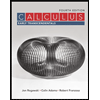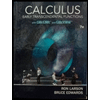
The graph G that is obtained by sequence of transformation in graph of y.
The graph G is y=|2x+2| .
Given:
The graph of y=|x| is shifted by 2 units left, then a horizontal shrink by a factor 1/2 and finally a down shift of 4 units.
Concept Used:
The graph of y=f(x) is translated or shifted horizontally left or right according as:
1) If y=f(x−c) , then graph shifted by c units right from y=f(x) .
2) If y=f(x+c) , then graph shifted by c units left from y=f(x) .
And, the graph of y=f(x) is translated or shifted vertically up or down according as:
1) If y=f(x)+c , then graph shifted by c units up from y=f(x) .
2) If y=f(x)−c , then graph shifted by c units down from y=f(x) .
The transformation of horizontal stretches or shrinks from y=f(x) is as follows:
The graph of y=f(xc) transform to horizontal stretches by factor c , when c>1 and horizontal shrinks by factor c when c<1 .
The transformation of vertical stretches or shrinks from y=f(x) is as follows:
The graph of y=c⋅f(x) transform to vertical stretches by factor c , when c>1 and shrinks by factor c when c<1 .
Calculation:
Consider the sequence of transformation,
The graph of y=|x| is shifted by 2 units left,
So x is replace by (x+2) , that is, y=|x+2| .
Thus, the equation y=|x| transform to y=|x+2| .
And, in the next transformation, the graph of y=|x+2| is shrink horizontally by a factor 1/2 ,
So x is replace by x1/2=2x , that is, y=|2x+2| .
Hence, the equation y=|x+4| transform to y=|2x+2| .
The next transformation, the graph of y=|2x+2| shifted down by 4 units,
So 4 is subtracted from left side of function, that is y=|2x+2|−4 .
Hence, the equation y=|2x+2| transform to y=|2x+2|−4 .
Conclusion The equation y=|x| transform to y=|2x+2| .
Chapter 1 Solutions
PRECALCULUS:...COMMON CORE ED.-W/ACCESS
- This table displays the current in equal intervals. Time t/ms 05 10 15 20 25 30 Current i/A 0 4.8 9.1 12.7 8.8 3.5 0 The formula for the charge as follows: 30x10-3 q 0 i dt Use formula to solve the current at 30ms using both the trapezoidal rule and Simpson's rule showing all steps and workingarrow_forwardTable displays the current in equal intervals. Charge formula: Time t/m 05 10 15 20 25 30 Current i/A 0 4.8 9.1 12.7 8.8 3.5 0 9 = 70 30x10-3 i dt Using mid-ordinate rule solve for the current at 30ms.arrow_forwardEvaluate 5 k=0 7 2. karrow_forward
- Pls help asap pls.arrow_forward9. Consider the function y = 2e¯*. Determine the equation of the tangent(s) to the curve that pass through the point P(2, 0). Your final answer must be expressed in standard form as per other tests. Negative exponents and/or fractions must not appear in your final answer. For full marks please draw an accurate sketch to support your solution.arrow_forward6. The graph below shows f, f'and fƒ" Clearly Label the curves.arrow_forward
 Calculus: Early TranscendentalsCalculusISBN:9781285741550Author:James StewartPublisher:Cengage Learning
Calculus: Early TranscendentalsCalculusISBN:9781285741550Author:James StewartPublisher:Cengage Learning Thomas' Calculus (14th Edition)CalculusISBN:9780134438986Author:Joel R. Hass, Christopher E. Heil, Maurice D. WeirPublisher:PEARSON
Thomas' Calculus (14th Edition)CalculusISBN:9780134438986Author:Joel R. Hass, Christopher E. Heil, Maurice D. WeirPublisher:PEARSON Calculus: Early Transcendentals (3rd Edition)CalculusISBN:9780134763644Author:William L. Briggs, Lyle Cochran, Bernard Gillett, Eric SchulzPublisher:PEARSON
Calculus: Early Transcendentals (3rd Edition)CalculusISBN:9780134763644Author:William L. Briggs, Lyle Cochran, Bernard Gillett, Eric SchulzPublisher:PEARSON Calculus: Early TranscendentalsCalculusISBN:9781319050740Author:Jon Rogawski, Colin Adams, Robert FranzosaPublisher:W. H. Freeman
Calculus: Early TranscendentalsCalculusISBN:9781319050740Author:Jon Rogawski, Colin Adams, Robert FranzosaPublisher:W. H. Freeman
 Calculus: Early Transcendental FunctionsCalculusISBN:9781337552516Author:Ron Larson, Bruce H. EdwardsPublisher:Cengage Learning
Calculus: Early Transcendental FunctionsCalculusISBN:9781337552516Author:Ron Larson, Bruce H. EdwardsPublisher:Cengage Learning





